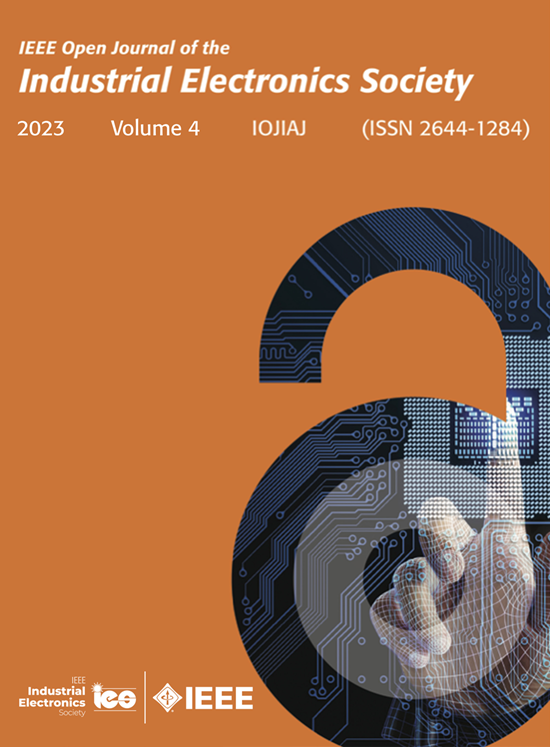无线通信的人工智能:昆虫的视角
IF 4.3
Q1 ENGINEERING, ELECTRICAL & ELECTRONIC
IEEE Open Journal of the Industrial Electronics Society
Pub Date : 2025-04-16
DOI:10.1109/OJIES.2025.3560946
引用次数: 0
摘要
本文概述了如何使用人工智能(AI)和边缘技术来改善欧盟项目“智能安全可信赖事物”(insect)的多个工业用例(UCs)中的无线连接。我们简要介绍了用于跨域体系结构设计的insect框架,其目标是由可重用和/或可互操作的技术构建块(BBs)辅助的UCs。这些BBs构成了包含AI和用于构建不同uc的支持组件的“砖块”。该框架由基于UC/BB需求处理(rq)的多个阶段组成。这些阶段包括rq的收集、协调、细化、分类、架构对齐和功能建模。这里将讨论这些阶段最相关的结果,重点是需要具有称为子构建块(Sub-Building blocks, sbb)的公共功能的技术组件的精细粒度,在这些组件中协作和跨域可重用性得到了优化。设计过程揭示了AI和sbb如何在物联网(IoT)参考架构的不同层和实体之间实现,包括用于信息交换的接口。这种详细的接口分析有望揭示诸如瓶颈、约束、漏洞、可伸缩性问题、安全威胁等问题。反过来,这将有助于识别支持人工智能的物联网系统的设计差距。本文总结了与无线连接相关的sbb,包括一般描述、实现问题、结果比较、采用的接口和跨域的结论。本文章由计算机程序翻译,如有差异,请以英文原文为准。
Artificial Intelligence for Wireless Communications: The InSecTT Perspective
This article presents an overview of how Artificial Intelligence (AI) and edge technology have been used to improve wireless connectivity in multiple industrial Use Cases (UCs) of the EU project “Intelligent Secure Trustable Things” (InSecTT). We present a brief introduction of the InSecTT framework for cross-domain architecture design, which targets UCs assisted by reusable and/or interoperable technical Building Blocks (BBs). These BBs constitute the “bricks” containing AI and supporting components that were used to build different UCs. The framework consists of multiple stages based on the processing of UC/BB requirements (RQs). These stages include collection, harmonization, refinement, classification, architecture alignment, and functionality modeling of RQs. The most relevant results of these stages are discussed here, with emphasis on the need for a refined granularity of technical components with common functionalities named Sub-Building blocks (SBBs), where collaboration and cross-domain reusability were optimized. The design process shed light on how AI and SBBs were implemented across different layers and entities of our reference architecture for the Internet-of-Things (IoT), including the interfaces used for information exchange. This detailed interface analysis is expected to reveal issues such as bottlenecks, constraints, vulnerabilities, scalability problems, security threats, etc. This will, in turn, contribute to identifying design gaps of AI-enabled IoT systems. The article summarizes the SBBs related to wireless connectivity, including a general description, implementation issues, a comparison of results, adopted interfaces, and conclusions across domains.
求助全文
通过发布文献求助,成功后即可免费获取论文全文。
去求助
来源期刊

IEEE Open Journal of the Industrial Electronics Society
ENGINEERING, ELECTRICAL & ELECTRONIC-
CiteScore
10.80
自引率
2.40%
发文量
33
审稿时长
12 weeks
期刊介绍:
The IEEE Open Journal of the Industrial Electronics Society is dedicated to advancing information-intensive, knowledge-based automation, and digitalization, aiming to enhance various industrial and infrastructural ecosystems including energy, mobility, health, and home/building infrastructure. Encompassing a range of techniques leveraging data and information acquisition, analysis, manipulation, and distribution, the journal strives to achieve greater flexibility, efficiency, effectiveness, reliability, and security within digitalized and networked environments.
Our scope provides a platform for discourse and dissemination of the latest developments in numerous research and innovation areas. These include electrical components and systems, smart grids, industrial cyber-physical systems, motion control, robotics and mechatronics, sensors and actuators, factory and building communication and automation, industrial digitalization, flexible and reconfigurable manufacturing, assistant systems, industrial applications of artificial intelligence and data science, as well as the implementation of machine learning, artificial neural networks, and fuzzy logic. Additionally, we explore human factors in digitalized and networked ecosystems. Join us in exploring and shaping the future of industrial electronics and digitalization.
 求助内容:
求助内容: 应助结果提醒方式:
应助结果提醒方式:


